From Xmas to Halloween
Monday, February 1st, 2010As has become tradition, we have cordoned off Christmas Eve for ourselves for the purposes of cooking and enjoying a multi-course, no-meat-is-too-expensive, dinner for two by the fire. It has long been the case that the food is what I anticipate the most during the Xmas season. Now that we have cultivated this new tradition of decadence, it has become the ultimate focus of my anticipation– there will be no better meal during the year than the one on December 24th.
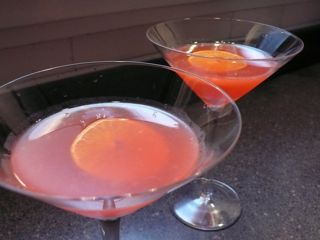
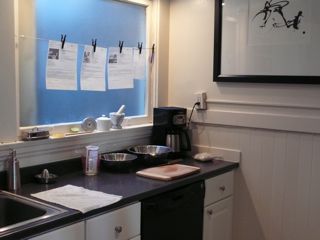
This year, though the rules of decadence applied, we were a little less astringent in the following of the recipes‘ rules, which resulted in some near misses and, admittedly, one bonafide disaster.
Le Menu
Whole-wheat Blini with Caviar and Crème Fraîche
Sparkling white
Cauliflower Soup with Pecorino Romano and Black Truffle Oil
Spice-rubbed Roasted Squab
Homemade Potato Gnocchi in Browned-butter Sauce
Sautéed Kale
2006 Bouchaine Pinot Noir, Carneros, Napa Valley
Taleggio Raw-milk Cheese
Apple-Pomegranate Tarte Tatin with Honeyed Mascarpone
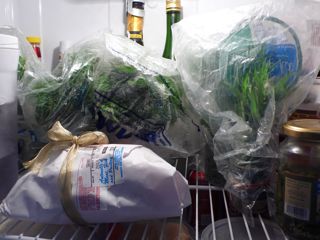
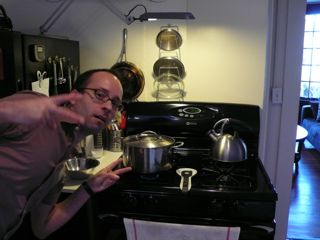
Generally speaking, it would be pretty hard not to pry a delightful evening from a menu such as this. Critically speaking, there were quite a few small mistakes we made along the way, or things that just didn’t taste “quite right” that I would do differently next time. The whole wheat in the blini overpowered the taste of caviar (which was on the cheaper side, to be sure, but we still paid good American money for that American caviar and we should have been able to taste it!); the cauliflower soup was a little bland – the cauliflower should have been roasted before being made into soup; the roasted squab (a.k.a. pigeon) was too roasted, alas, and became a little dried out; the kale, it turns out, is not something that one can sauté with garlic, like swiss chard, to produce a lovely aromatic green on the plate.
The apple-pomegranate tarte tatin was a catastrophe. We’ve made the classic tarte tatin a dozen times with great success (and fabulous leftovers) but the addition of pomegranate poisoned the formula. What started as this:
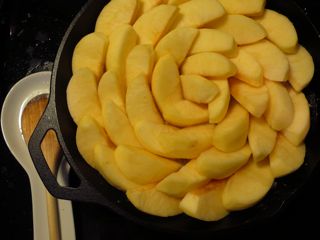
…ended up as this:
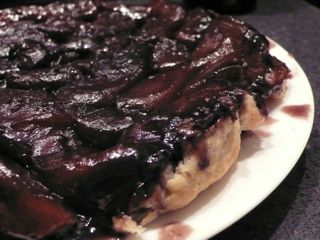
Black. Undeniably, solidly, even-viewed-in-direct-sunlight, midnight black. It seems that pomegranate adds zero to the flavour of such a tart and effectively turns the sugars and apples into pure evil if left to simmer together for a long period of time. On the plus side, it was still entirely edible, and now we have a secret formula for making a wicked Hallowe’en dessert.
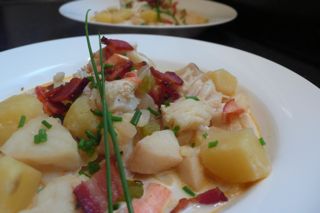 We bought a 4-lb. lobster and we named him Gavin. He cost $31.96 + tax. He was too big to fit in any of our pots, but we filled the largest one with water anyway and when it was boiling, we pushed Gavin in and held the pot lid closed. He struggled. That was the worst part about making lobster chowder.
We bought a 4-lb. lobster and we named him Gavin. He cost $31.96 + tax. He was too big to fit in any of our pots, but we filled the largest one with water anyway and when it was boiling, we pushed Gavin in and held the pot lid closed. He struggled. That was the worst part about making lobster chowder.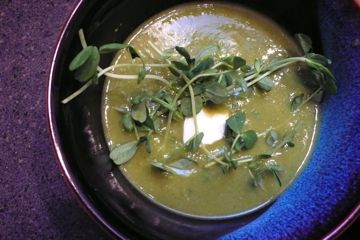 Made with frozen peas, this soup would be right up Nigella Lawson’s alley. We added some tarragon to this light, fresh version, and some crisp pea shoots which sat suspended on the surface above the white dollop of creme fraîche. Perfect with shards of warm, crunchy garlic bread.
Made with frozen peas, this soup would be right up Nigella Lawson’s alley. We added some tarragon to this light, fresh version, and some crisp pea shoots which sat suspended on the surface above the white dollop of creme fraîche. Perfect with shards of warm, crunchy garlic bread.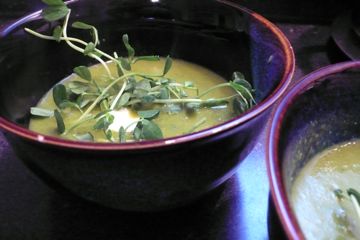
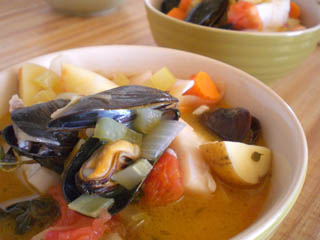 Janet’s first experiments in filleting a fish left us with excellent ingredients for fish stock, so we threw the cap and rake (read head and spine) into some water with a bay leaf and leek greens for about an hour. I’m told fish stock only needs a half hour, but I prefer to really work the fish smell into the house. When I’ve gone to all that trouble, I want people to walk into the house three days later and say, “Were you cooking fish?”
Janet’s first experiments in filleting a fish left us with excellent ingredients for fish stock, so we threw the cap and rake (read head and spine) into some water with a bay leaf and leek greens for about an hour. I’m told fish stock only needs a half hour, but I prefer to really work the fish smell into the house. When I’ve gone to all that trouble, I want people to walk into the house three days later and say, “Were you cooking fish?”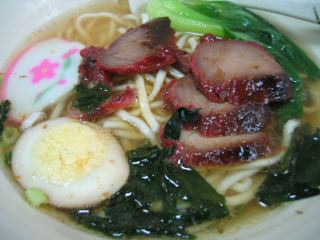 Food can be a little challenging. The key factor is selecting a food stand where we can communicate what we want. Some restaurants and stands have pictures, others have English menus. Some just have food on display at which to point. It’s also possible to point at meals that have been served to other people. Most food vendors seem used to selling food in this fashion.
Food can be a little challenging. The key factor is selecting a food stand where we can communicate what we want. Some restaurants and stands have pictures, others have English menus. Some just have food on display at which to point. It’s also possible to point at meals that have been served to other people. Most food vendors seem used to selling food in this fashion.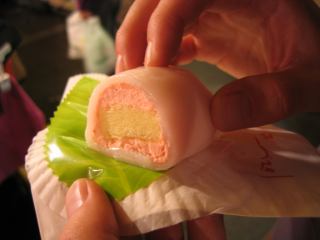 Dessert was a bit of surprise. I picked out something pink from a display case with the assumption it was soft, fluffy and creamy. I’m glad we didn’t wait until we got back to the hostel to eat it because it turned out to be frozen. The outside was covered in sticky gelatinous rice. The inside was like strawberry ice cream, but with a slightly waxy texture. We’re sure to have more pleasant surprises.
Dessert was a bit of surprise. I picked out something pink from a display case with the assumption it was soft, fluffy and creamy. I’m glad we didn’t wait until we got back to the hostel to eat it because it turned out to be frozen. The outside was covered in sticky gelatinous rice. The inside was like strawberry ice cream, but with a slightly waxy texture. We’re sure to have more pleasant surprises.